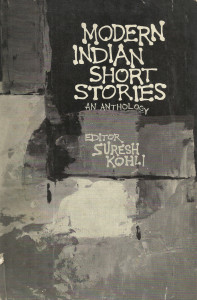 Aspects of Indian literature: the changing pattern
Aspects of Indian literature: the changing pattern
Despite there being such brilliant practitioners of the craft in almost every Indian language, the short story has failed to generate the kind of interest in contemporary times that the novel did. Yet, there have been writers in India as well as in the West who have used the medium of short story both as a means of entertainment and socio-political protest; used it as a vehicle for dissent; for dissemination of knowledge and information; for understanding human psychology, attitude and behaviour patterns. The present anthology has not been governed by any specific theme, concern or yardstick, except, perhaps, brilliance of the craft. It also represents the unity in diversity in another way. It draws upon the curious momentum in human psychology. It is replete with different shades of human emotions, which in turn are also universal. No two writers seem to use the same narrative style, and yet the narrative pattern is uniquely Indian. – See more at: http://www.mrmlonline.com/?page=shop/flypage&product_id=2291188#sthash.HqAMLoAN.dpuf
Despite there being such brilliant practitioners of the craft in almost every Indian language, the short story has failed to generate the kind of interest in contemporary times that the novel did. Yet, there have been writers in India as well as in the West who have used the medium of short story both as a means of entertainment and socio-political protest; used it as a vehicle for dissent; for dissemination of knowledge and information; for understanding human psychology, attitude and behaviour patterns.
The present anthology has not been governed by any specific theme, concern or yardstick, except, perhaps, brilliance of the craft. It also represents the unity in diversity in another way. It draws upon the curious momentum in human psychology. It is replete with different shades of human emotions, which in turn are also universal. No two writers seem to use the same narrative style, and yet the narrative pattern is uniquely Indian.
 Aspects of Indian literature: the changing pattern
Aspects of Indian literature: the changing pattern